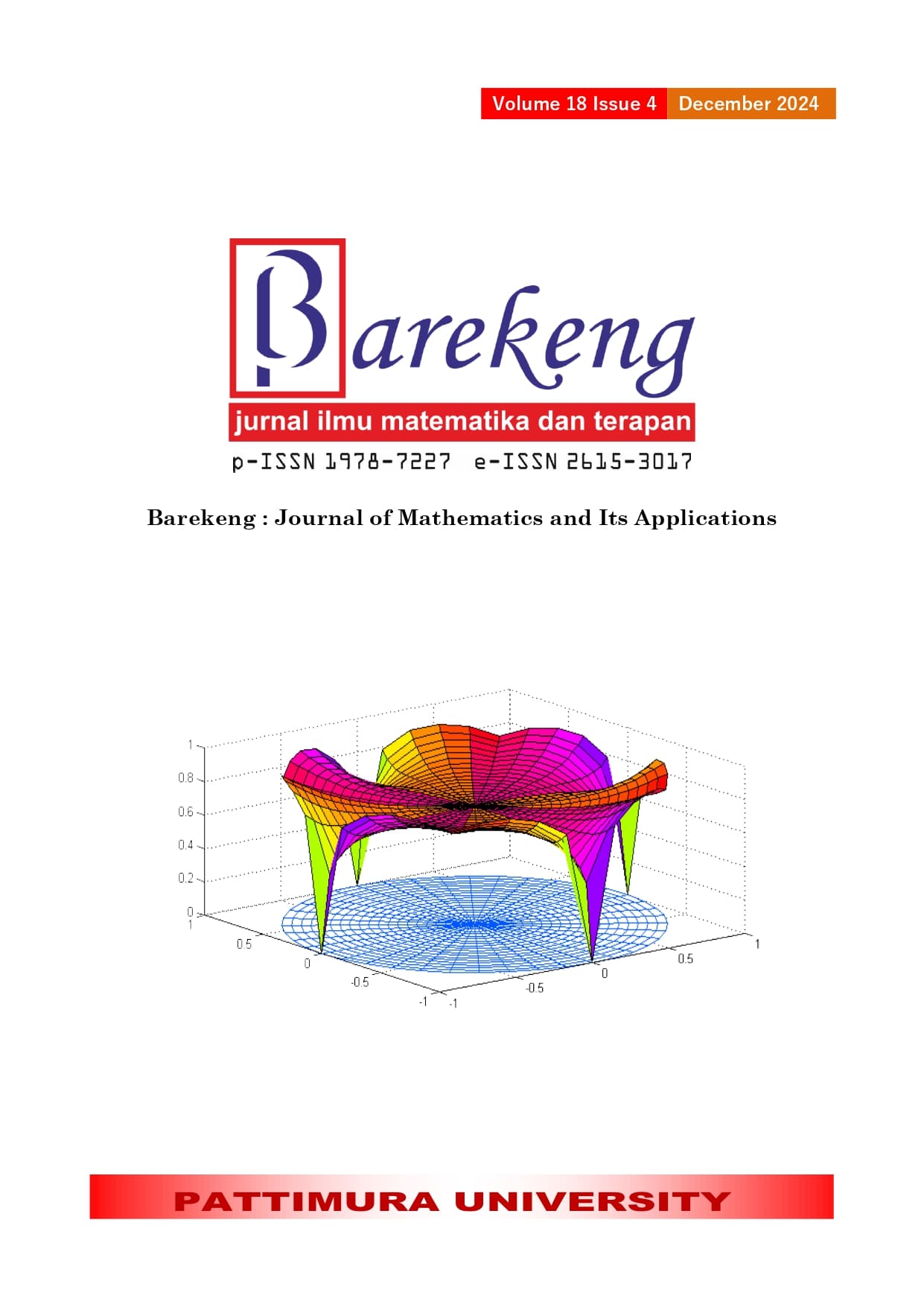SMALL OBJECT DETECTION APPROACH BASED ON ENHANCED SINGLE-SHOT DETECTOR FOR DETECTION AND RECOGNITION OF INDONESIAN TRAFFIC SIGNS
Abstract
The detection and recognition of traffic signs are crucial components of advanced driving assistance systems (ADAS) that enhance road safety. Current traffic sign detection and recognition model technology is proficient in identifying and interpreting traffic signs. However, for accurate detection and recognition, the traffic sign in the image must be of a certain minimum pixel size or distance from the driver's sight line for proper detection. The ADAS system should be capable of detecting and recognizing road traffic signs from a considerable distance as they come into the driver's line of vision. The higher the vehicle speed, the greater the distance required for the sign to be detected and recognized, allowing the driver sufficient time to react according to the sign's meaning. Addressing these challenges, this research proposes an enhanced version of the single shot detector (SSD) algorithm, commonly used in object detection, to improve the algorithm's ability to detect small objects. The proposed method involves adding an auxiliary layer module to the original SSD architecture to increase the feature map resolution and expand the conventional layer's receptive space. With the Enhanced SSD algorithm, the detection capability of the SSD can be significantly enhanced in terms of accuracy. The limitations of this study are related to the influence of occlusion and clutter, which might affect the performance of object detection, especially for small objects, which are more susceptible to being influenced by various factors. The research results demonstrate that Enhanced SSD improves object detection accuracy compared to the original SSD, with a mean average precision (mAP) of 97.87 compared to 95.35 for detecting 21 traffic signs in Indonesia.
Downloads
References
J. Xu, Y. Huang, and D. Ying, “Traffic Sign Detection and Recognition Using Multi-Frame Embedding of Video-Log Images,” Remote Sens., vol. 15, no. 12, 2023, doi: 10.3390/rs15122959.
R. K. Megalingam, K. Thanigundala, S. R. Musani, H. Nidamanuru, and L. Gadde, “Indian traffic sign detection and recognition using deep learning,” Int. J. Transp. Sci. Technol., vol. 12, no. 3, pp. 683–699, 2023, doi: 10.1016/j.ijtst.2022.06.002.
A. W. Sudjana and H. Supeno, “Implementasi Deep Learning untuk Object Detection Menggunakan Algoritma YOLO (You Only Look Once) pada Rambu Lalu Lintas di Indonesia,” Univ. Pas., pp. 1–8, 2021.
Y. Zhu and W. Q. Yan, “Traffic sign recognition based on deep learning,” Multimed. Tools Appl., vol. 81, no. 13, pp. 17779–17791, 2022, doi: 10.1007/s11042-022-12163-0.
A. Vennelakanti, S. Shreya, R. Rajendran, D. Sarkar, D. Muddegowda, and P. Hanagal, “Traffic Sign Detection and Recognition using a CNN Ensemble,” in 2019 IEEE International Conference on Consumer Electronics (ICCE), 2019, pp. 1–4. doi: 10.1109/ICCE.2019.8662019.
M. Flores-Calero et al., “Traffic Sign Detection and Recognition Using YOLO Object Detection Algorithm: A Systematic Review,” Mathematics, vol. 12, no. 2. 2024. doi: 10.3390/math12020297.
M. Akbar, A. S. Purnomo, and S. Supatman, “Multi-Scale Convolutional Networks untuk Pengenalan Rambu Lalu Lintas di Indonesia,” J. Sisfokom (Sistem Inf. dan Komputer), vol. 11, no. 3, pp. 310–315, 2022, doi: 10.32736/sisfokom.v11i3.1452.
C. Peng, M. Zhu, H. Ren, and M. Emam, “Small Object Detection Method Based on Weighted Feature Fusion and CSMA Attention Module,” Electron., vol. 11, no. 16, 2022, doi: 10.3390/electronics11162546.
W. Liu et al., “SSD: Single shot multibox detector,” Lect. Notes Comput. Sci. (including Subser. Lect. Notes Artif. Intell. Lect. Notes Bioinformatics), vol. 9905 LNCS, pp. 21–37, 2016, doi: 10.1007/978-3-319-46448-0_2.
M. Weber, T. Weiss, F. Gechter, and R. Kriesten, “Approach for improved development of advanced driver assistance systems for future smart mobility concepts,” Auton. Intell. Syst., vol. 3, no. 1, p. 2, 2023, doi: 10.1007/s43684-023-00047-5.
X. N. Huynh, G. B. Jung, and J. K. Suhr, “One-Stage Small Object Detection Using Super-Resolved Feature Map for Edge Devices,” Electronics, vol. 13, no. 2. 2024. doi: 10.3390/electronics13020409.
E. S. L. Roa, J. S. U. López, and I. D. C. Silva, “Real time face mask detection with SSD,” in 2021 IEEE 2nd International Congress of Biomedical Engineering and Bioengineering (CI-IB&BI), 2021, pp. 1–4. doi: 10.1109/CI-IBBI54220.2021.9626095.
Hao Zhang, X. gong Hong, and L. Zhu, “Detecting Small Objects in Thermal Images Using Single-Shot Detector,” Autom. Control Comput. Sci., vol. 55, no. 2, pp. 202–211, 2021, doi: 10.3103/S0146411621020097.
S. Zhang, Z. Ma, G. Zhang, T. Lei, R. Zhang, and Y. Cui, “Semantic Image Segmentation with Deep Convolutional Neural Networks and Quick Shift,” Symmetry, vol. 12, no. 3. 2020. doi: 10.3390/sym12030427.
W. Luo, Y. Li, R. Urtasun, and R. Zemel, “Understanding the effective receptive field in deep convolutional neural networks,” in Proceedings of the 30th International Conference on Neural Information Processing Systems, in NIPS’16. Red Hook, NY, USA: Curran Associates Inc., 2016, pp. 4905–4913.
T. Diwan, G. Anirudh, and J. V Tembhurne, “Object detection using YOLO: challenges, architectural successors, datasets and applications,” Multimed. Tools Appl., vol. 82, no. 6, pp. 9243–9275, 2023, doi: 10.1007/s11042-022-13644-y.
D. Erhan, C. Szegedy, A. Toshev, and D. Anguelov, “Scalable Object Detection Using Deep Neural Networks,” in 2014 IEEE Conference on Computer Vision and Pattern Recognition, 2014, pp. 2155–2162. doi: 10.1109/CVPR.2014.276.
Copyright (c) 2024 Phie Chyan, Norbertus Tri Suswanto Saptadi, Jeremias Mathias Leda

This work is licensed under a Creative Commons Attribution-ShareAlike 4.0 International License.
Authors who publish with this Journal agree to the following terms:
- Author retain copyright and grant the journal right of first publication with the work simultaneously licensed under a creative commons attribution license that allow others to share the work within an acknowledgement of the work’s authorship and initial publication of this journal.
- Authors are able to enter into separate, additional contractual arrangement for the non-exclusive distribution of the journal’s published version of the work (e.g. acknowledgement of its initial publication in this journal).
- Authors are permitted and encouraged to post their work online (e.g. in institutional repositories or on their websites) prior to and during the submission process, as it can lead to productive exchanges, as well as earlier and greater citation of published works.






1.gif)



